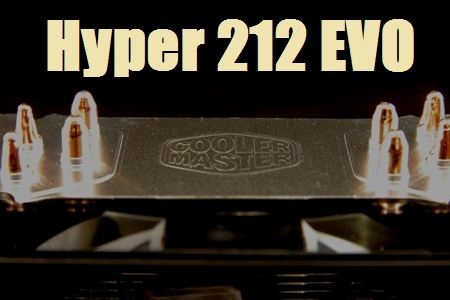Coolermaster Hyper 212 Evo Review
Performance
To provide continuity the test set up is as always
Gigabyte UD3R V2
Intel i7 950 @ 4GHz 1.25v
Mushkin Radioactive 2000MHz
HIS 6850
Corsair Carbide 500R
Corsair AX750w
For the first test we set our i7-950 overclocked to 200×20 @ 1.25v for a clock speed of 4.0GHz. We allow the system to idle for 10 minutes and then run Prime95 ‘maximum heat maximum stress’ setting for a further 30 minutes.
After 30 minutes we note the temperatures of all cores and the ambient temperature of the room. An average of all cores is taken, then the ambient temperature is removed from this figure and this gives us the delta temperature. Delta is the temperature difference above ambient which is a truer reflection of the heat-sink performance rather than mere maximum figures. Testing in an Igloo or the Sahara would give vastly different maximum temperatures, yet the Delta could be the same.
Â
The second test follows all steps from above but with a 200×21 @ 1.35v for 4.2GHz overclock, the extra voltage in this test allows us to see if the heat-sink can cope when extreme loads and overclocks are applied. Regretfully although at idle the cooler was able to stay at a reasonable delta T of 22 degrees, after only 5 minutes of Prime load testing the indicated temperatures exceeded the 90 degrees limit above which a cooler is considered to fail the test.
Â
Conclusion
So what do we make of the Coolermaster Hyper 212 EVO? Well I think the first thing to bear in mind here is the price. £23.98 is not a lot of money for a cooler of this type. But have Coolermaster cut corners somewhere to bring it to market at this price point? In essence, is it “cheap” or is it inexpensive and good value?
Lets start with the looks, nothing special, but then neither are any coolers of this style. The inclusion by Coolermaster of a nice looking dark smoked grey fan does lift the appearance over the older 212+ which had a simple solid black fan and the inclusion of plastic fan retention clips rather than the wire spring clips popular with some manufacturers adds to the air of intergration of the fan mounting mechanism (Coolermaster also include a second set of clips and rubber isolating pads to mount a fan on the reverse side of the cooler should you so desire). According to Coolermasters own figures the 600-1600RPM PWM non LED fan is able to shift 24.9 and 66.3 CFM of air depending on fan speed and does this while emitting between 9 and 31 dBA. in practice the fan is barely audible at low fan speeds, and not much louder at full tat, although with the case side off a smooth Whoosh can be heard, which may well be the noise of the air moving over the cooling fins more than the fan itself, either way it’s nothing to worry about as with the case side on nothing can really be heard over the case fans themselves.
Quality wise things are fine too, no bent fins, good solid assembly. It comes well packed and protected with the packaging adding to the impression that what lies within is a quality product. I’ve already mentioned the fitting and the instructions, so I’m not going to go on about them again, they’re not so much bad, but as my school reports used to say “Could do better” (turns out the school reports were wrong)
In naming this 212 the “EVO” Coolermaster are showing that they have evolved the previous model, the most obvious evolution being the use of 4 x 6mm continuous direct contact heat-pipes, the idea being that the increased surface area and decreased gap between the pipes will better enable heat transfer and so improve performance.
£23.98 is good value then, the 212 EVO ticks all the right boxes. Problem is that it’s also a very popular price point for what can be called “entry level performance coolers” There are a lot of other coolers out there ticking the right boxes to varying degrees, such as the Corsair A50, the Arctic cooling freezer 13, the Gelid Tranquillo rev 2 and the Titan Hati to name but a few. All fall to within a few pence to a pound or so of the price of the 212 EVO. With all the coolers mentioned above looking basically the same, give or take a fancy fan here and there, the 212 EVO has it’s work cut out for it then and must give a good report of itself well when it comes to performance.
The review of the Enermax ETD-T40 earlier this month prompted a few people to ask how well it was thought it would stack up against the 212. As we’ve now tested the 212 EVO we can answer the question objectively. A glance at the figures above shows us that it doesn’t perform quite as well, with a max temp of 77 degrees compared to the T-40s 74.5 Given that all testing is carried out at max fan RPM it may well be that the T40s higher top fan speed of 1800 RPM explains some of this variance.  Fan speed variance aside, the T40 reports better performance figures, but then lets remember what we said in the first line of the conclusion, this cooler costs just £23.98, a good £10 or so less than the T40. The decision then as to which is better depends on whether you want to shave a few degrees, or save a few quid.
Â
Thanks to Cooler Master for the 212 Evo on review today, you can discuss your thoughts on this review in our forums.Â





